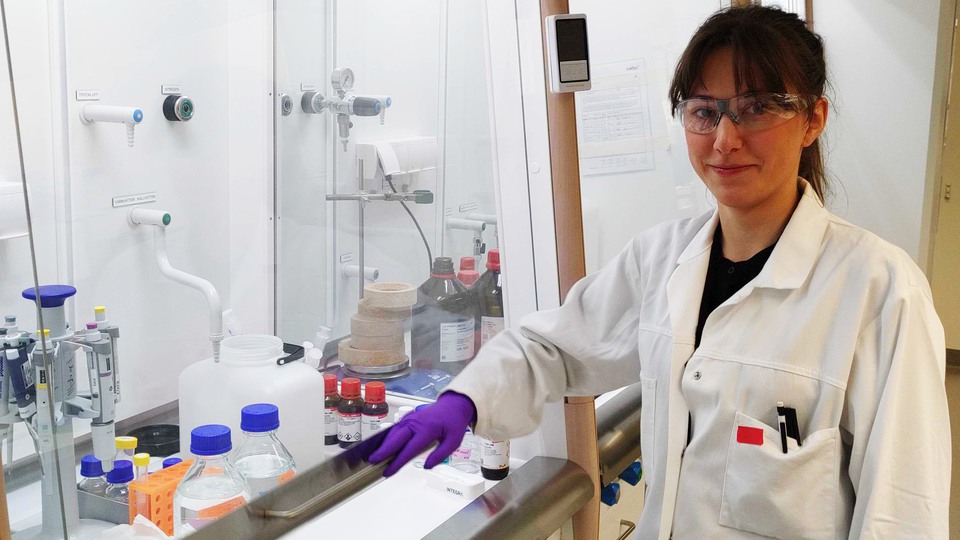
A research exchange that contributes to finding greener alternatives
Elisabeth Söderberg, one of the research students of Mistra SafeChem, is currently performing a research exchange. At AstraZeneca, she can benefit from instruments, resources and expertise that make large-scale screening possible and contribute to finding greener alternatives for fine chemical synthesis.
We asked Elisabeth Söderberg about the value of this exchange.
First, give a brief background about yourself!
– I’ve always liked science, especially molecular biology, and always wanted to work with creating new solutions to a more environmentally friendly society. Hence, I studied engineering in biotechnology at Uppsala University. When I graduated, I applied for a PhD position in Per-Olof Syrén’s group at the Royal Institute of Technology (KTH) in Stockholm. In our group, we work with transdisciplinary scientific methods to develop novel enzyme engineering strategies for applications within biopolymer science and for the generation of superior biopharmaceuticals and fine chemicals from renewable sources.
What do you work with in Mistra SafeChem?
– We are developing a safe-by-design pipeline for biocatalytic amide bond synthesis. We collaborate with partners from different work packages in Mistra SafeChem, such as IVL, RISE and AstraZeneca. Together we have analysed and produced a pool of safe building blocks for amide bond synthesis, whose structures we have matched against known accepted substrates of characterized amide bond synthesizing enzymes. By matching the structures of the safe acids and amines to the known accepted substrates by various amide bond synthesising enzymes, we selected an enzyme to work with. We at KTH have then worked with bioinformatic tools to improve the enzyme’s thermostability and substrate promiscuity.
What are you doing at AstraZeneca?
– On my visit here, I can screen my enzymes against the pool of safe building blocks in microwell plates. Once we find more successful substrates and enzyme combinations, we will continue scaling up the reactions and further enzyme improvements. The AstraZeneca facilities offer instruments, resources and competence that make this large-scale screening possible and further help with the research towards enzyme-catalysed reactions as a greener alternative for fine chemical synthesis.
A key step towards realizing a safe-and-sustainable-by-design pipeline
We also asked Per-Olof Syrén, supervisor for Elisabeth Söderberg, about his opinion on the exchange.
What is your role in the exchange?
– In my role as principal investigator of this sub-project, I strive to catalyse collaborations within Mistra SafeChem to enable the execution of complex projects that could not have been realized by individual research groups alone. As the main supervisor of Elisabeth, I also have an educational perspective of doctoral students in focus.
What contribution can this research make to Mistra SafeChem?
– This industrial-academy symbiosis experimentally verifies in silico data generated across several work packages. The exchange is a key step towards realizing a safe and sustainable-by-design pipeline.
-
2024-04-03 | newsFour more years – Mistra SafeChem gets go-ahead for second phase
-
2024-03-28 | newsThe 2023 Mistra SafeChem annual report focuses on more than just one year
-
2024-03-21 | newsSETAC conference on LCA will be held in Gothenburg
-
2024-02-27 | newsMistra SafeChem researchers keynote speakers at large conference on SSbD
-
2024-02-16 | newsThe Mistra SafeChem cosmetics study specially invited to EU workshop on SSbD

